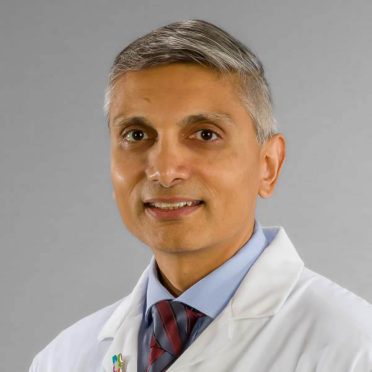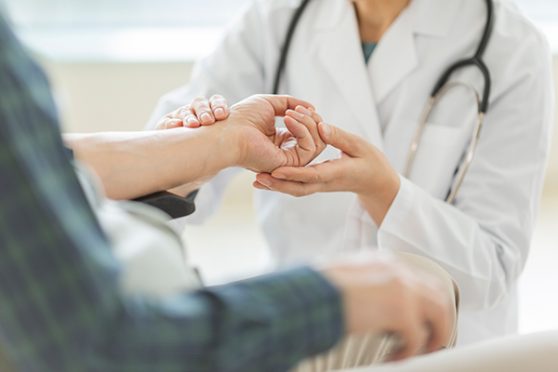A Hartford HealthCare electrophysiology expert tapped a new investigational procedure to help a patient experiencing recurrent lightheadedness and fainting due to a slowing of her heartbeat.
Aneesh Tolat, MD, a cardiac electrophysiologist with the Heart & Vascular Institute at Hartford HealthCare, said the cardioneural ablation helped prevent the lightheadedness and fainting spells, which were caused by reflexes related to nerve fibers around the heart.
“The patient had been having recurrent vagally mediated syncope, or passing out, and near syncope, almost passing out. After implanting a cardiac monitor, we traced the incidents to a slowing of the heart rate, second-degree heart block and eight-second pauses in her heartbeat,” Dr. Tolat said.
The woman was experiencing lightheadedness almost twice a month, and she had passed out once every few months. The uncertainty was frightening and affected her quality of life, Dr. Tolat noted.
> Suffering from an abnormal heart rhythm? Connect with an electrophysiologist
Testing a new procedure
Previously available treatment for this condition failed to deliver strong results. While the cardioneural ablation procedure is still being investigated, experience told Dr. Tolat that it might help this patient.
During the procedure, he mapped neural clusters in the left and right atriums of the heart called ganglionic plexi and used a catheter to ablate or eliminate their effect on the heart. The ganglionic plexi, Dr. Tolat noted, are connected with several types of heart arrhythmias.
“The patient’s overall heart rate increased and the episodes of lightheadedness and passing out stopped as a result,” he said. “She is doing very well now, five months later, and has no recurrent symptoms.”
> Want more health news? Text StartHere to 85209 to sign up for text alerts
Other applications
In addition to helping with lightheadedness and passing out, cardioneural ablation has been used to treat second-degree heart block, Dr. Tolat said.
“While still investigational, we are enthusiastic about the uses for this new procedure, and the ability to help other patients improve their quality of life,” he said.



